#pediatric emergency medicine
Text
Emergency medicine is a medical speciality that focuses on the immediate and urgent care of patients with acute illnesses or injuries. Emergency physicians are trained to handle a wide range of medical emergencies, from minor injuries and illnesses to life-threatening conditions.
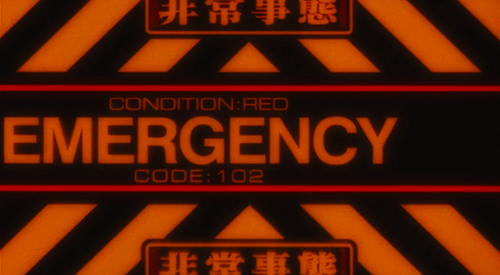
Emergency medicine has its roots in the military and battlefield medicine, where doctors and nurses had to quickly and effectively treat wounded soldiers. Over time, the principles of emergency medicine have been adapted to civilian settings, and today emergency medicine is an important part of the healthcare system.
Emergency departments, also known as ERs or A&E departments, are the primary point of care for patients with urgent medical needs. Emergency physicians and other healthcare providers work together to quickly assess, diagnose, and treat patients to ensure they receive the care they need.
Emergency medicine is a challenging and rewarding field that requires specialized knowledge and skills. Emergency physicians must be able to think and act quickly in high-pressure situations, and they must be able to provide care to patients of all ages and backgrounds. If you are interested in emergency medicine, there are many resources available to help you learn more about this fascinating field.
#Emergency Medicine#Emergency care#Emergency Department#Emergency Physician#Acute care#Urgent care#Trauma care#Pediatric Emergency Medicine
0 notes
Text
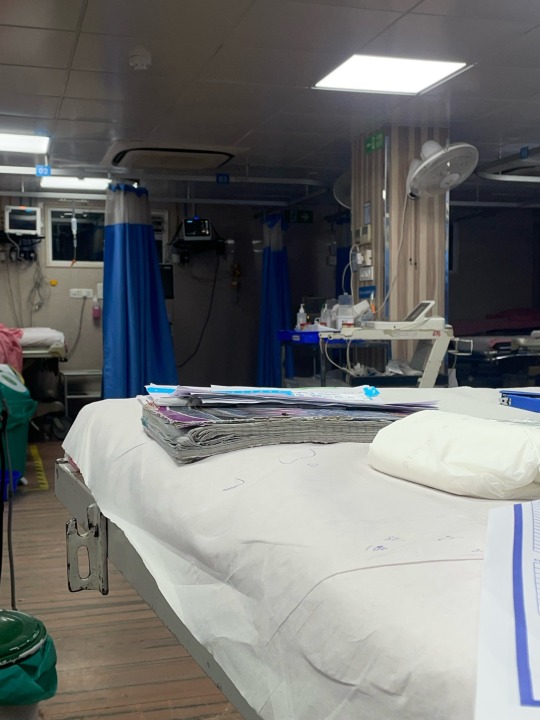

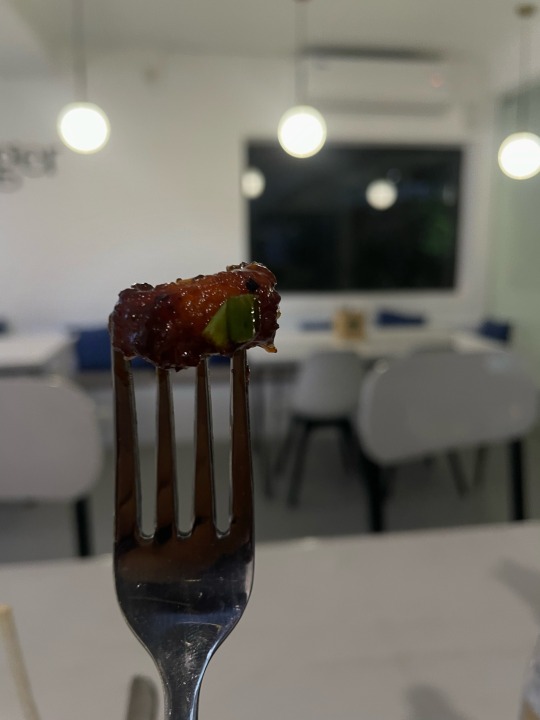

10.10.2023
Came home after a 36hour duty. I cannot feel my legs.The ER was too busy and we were short staffed and ran out of beds because of the dengue outbreak.
Made rasam rice and omelette, the ultimate comfort food.
I was still hungry so I came out to a cafe to have some good chicken. Last 36 hours I had bites of cookies, puffs, biscuits and sips of milkshake and coffee and it kept me going. But my hunger hit me ultimately when I stepped home.
Might go back home and read about respiratory system examination.
#phtooftheday#medstudlife#studyblr#studysthetics#medstudynotes#study mood#study blog#med studyblr#desi studyblr#study motivation#new studyblr#study medicine#pediatric resident#pediatrician#emergency room#neonatology
23 notes
·
View notes
Text


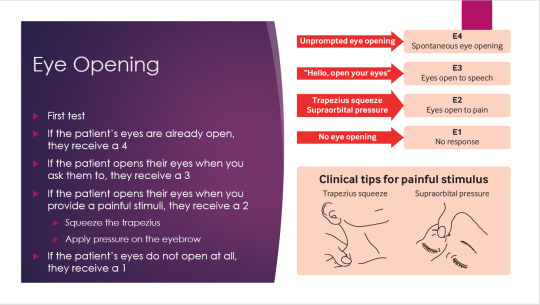
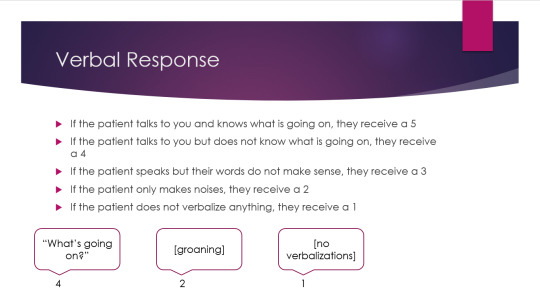






#studyblr#notes#powerpoint#slides#medblr#medical notes#med notes#ems#ems notes#emergency medicine#emergency medicine notes#emt#emt notes#paramedic#paramedic notes#emergency medical technician#emergency medical technician notes#glascow scale#glascow coma scale#pediatric glascow coma scale#pediatric coma scale#coma scale#coma#rating comas#gcs#gcs score#gcs rating#glascow coma score notes#glascow coma score presentation#presentation
32 notes
·
View notes
Text
[[semi-plotted starter dropped without warning for @lietwice
Julian is late. Generally, he would've made it home ages ago, or else he would have at least sent a message. But today, he doesn't send anything. He's too nervous to give advanced warning for this. He simply can't bear his husband saying 'no,' and he knows... He knows that once this little girl is in front of him, he won't be able to, no matter that she's an orphan, that she's terribly ill and likely to only break their hearts, that Julian has been so clear, over the years, about his intentions regarding children.
And this doesn't refute those statements, he assures himself, as he walks home in the rare rain, the baby sheltered carefully beneath his outer layers. Because this is only to ensure she has the care she needs until her condition is stabilized.
If the lump he was cradling wasn't enough of a giveaway as soon as their door closed behind him--nearly two hours past dinner now, he notes with a wince--it doesn't take long for the little girl, with complete disregard for the way Julian has frozen, eyes locked with his husband's in the hallway, to make an unmistakable noise.
#lietwice. garak#c. julian#v. consequences#t. a life after war#s.s. enjoyable company#post war post the worst of the reconstruction where julian has moved from emergency medicine to pediatrics#and they got married on cardassia somewhere in that stretch of time?#I'm picturing julian with salt and pepper hair#new thread
83 notes
·
View notes
Text
Balaji Hospital | Nephrology Specialists for Kidney Diseases
Balaji Hospital's Nephrologist providing expert care for kidney health & diseases including diagnostic tests & advanced treatments like dialysis & transplantation
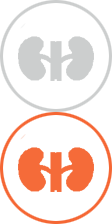
#Nephrologist and Nephrologist#Nephrologist#Guj.Factory rules#Work of H.I.R.A#Retainer ship of doctor to company(50-200 employees)#Emergency Empanelment of industry for hospitalization of workers#Preoperative physician#Anesthetist#Pulmonary disease#Chest Physician#Diseases related to hormones#Endocrinologist#Best treatment for ear#nose & throat diseases#ENT#Bariatric Surgery#Solid Organ Transplantation#Pediatric Surgery#Thoracic Surgery#Vascular Surgery#General Surgery#Community gynecology#Materno-fetal medicine#Gynecology and Obstetrics#Infectious diseases#Vadodara#Gujarat#India
0 notes
Text
Diseases & Conditions for Parents with Children (Ages 4-11)
Different Diseases
Children between the ages of four and eleven are still developing their immune systems, and as a result, they are more vulnerable to diseases and conditions. Common illnesses that affect children in this age range include colds, flu, asthma, ear infections, and allergies. However, some diseases and conditions can be more severe than others and may require medical attention.
Note the Behaviour
It's important to pay attention to your child's behaviour as some diseases and conditions exhibit unique symptoms or warning signs. If your child has a fever, rash, sore throat, or persistent cough, it could be a sign of a more serious condition. Parents should be proactive and seek medical attention if a condition starts to escalate or shows no signs of improvement.
Be Cautious
As a parent, it is important to be cautious and take preventive measures to protect your child from contracting diseases. Encourage your child to practice good hygiene, such as washing their hands regularly, covering up when they cough or sneeze, and avoiding contact with people who have been exposed to diseases. Parents should also consider vaccinations as a form of preventive care for their children.
Visit Your Pediatrician Regularly
Regular check-ups with a pediatrician can help identify potential health issues before they become severe problems. During these appointments, pediatricians can assess your child's growth and development, provide vaccinations, and monitor any pre-existing conditions. Routine check-ups also provide parents with an opportunity to ask any questions they may have about their child's health.
Further Treatment
If your child is diagnosed with a disease or condition, it's important to seek further treatment as advised by a pediatrician. Treatment options may include prescription medication, lifestyle changes, or more advanced medical procedures. It's essential to follow the doctor's advice and ensure that your child completes any prescribed treatment to ensure proper recovery.
In conclusion, parents with children aged between four and eleven should be aware of potential diseases and conditions that could affect their child's health. It's essential to be proactive with preventive care, seek medical attention when necessary and follow the advice of healthcare professionals to ensure that your child receives the best care possible. With regular check-ups and proper attention, children can grow to be healthy and happy adults.
#hospital#alkaridevihospital#gynecologist#health#blog#care#emergency#gynecologyconsultation#wellness#blogs#pediatrics#healthcare#prevention#medicine#pharmacy#childspecialist#children#nicubaby#neonatalcare#neonatal#health and wellness#wellbeing#health tips#medical blog#daily blog#tumblr blog#tumblr#tumblr blaze
0 notes
Text
CHOP Researchers Find Rate of Fatal Opioid Poisonings Among Children More Than Doubled Over 13-Year Span
Newswise — Philadelphia, March 8, 2023 – Researchers from Children’s Hospital of Philadelphia (CHOP) found opioids were responsible for more than half of all fatal poisonings in children ages 5 and younger, more than double the proportion of fatal poisonings caused by opioids in 2005. Additionally, over-the-counter drugs still contribute to fatal poisonings in this age group despite increased…
View On WordPress
0 notes
Text
Journal of Clinical Intensive Care and Medicine
The Journal of Clinical Intensive Care and Medicine aims to publish manuscripts that can be evident and useful resource for those wishing to study, practice and excel in Clinical intensive care and medicine.
The Journal of Clinical Intensive Care and Medicine demonstrates the Heighten Science’s desire to spread best current practices as well as a commitment to make the manuscripts relevant to everyone from medical student to the chief of an intensive care unit.
url : https://www.intensivecaremedjournal.com/
#Acute and emergency medicine#Anesthetic administration#General and regional anesthesia#Infection control#Intensive and critical care#Intensive care and pain therapy#Organ dysfunction#Pediatric intensive care#Perioperative medicine#Pharmacokinetics
0 notes
Text
A near miss.
It was an extremely busy night in the ER, and we were very understaffed. I was the only ER tech there from 1900 to 0700, and they had me running ragged. It wasn’t even my usual shift. I had picked up to cover another tech’s time off, and another had called in sick for Covid. We were short on nurses, as always, and as the only tech, I had to help make up the difference for the missing nurses.
We had two tib-fib kiddos in, back-to-back. That’s a tibia and fibula dual fracture. The ER techs are responsible for helping the orthopedic physicians set the bones and put the temporary casts on to stabilize the kiddos enough to go home that night and follow up in the clinic in a few days. Unfortunately for me, the help needed for a tib-fib is holding traction and providing extra force to the ortho’s pull to line everything up where it’s supposed to be, and both kiddos outweighed me by a notable margin.
The first one was terrified of needles and screamed and cried throughout getting their IV for the sedation, so I was already worn out from trying to hold their arm steady for 4 attempts by 2 nurses to get the IV in the first place. They were still crying and fighting when it was time to start the sedation in the procedure room and they chewed through the ketamine like it was nothing. Normally, after the ketamine is administered and the sedation is started, they’d just kind of shut off for a bit and go mostly limp. But no, this one fought the sedative the entire time, so I was trying to hold traction on their leg while also trying to hold them still and trying to keep them from kicking the nurse doing the sedation. It was probably the toughest tib-fib I’ve ever assisted for.
We finally finished, after 3 attempts and a declaration of “close enough”, so I trudged back out to the floor to hopefully sit down for a few minutes. As was to be expected, those few minutes turned out to be about 30 seconds before I was assigned to make a splint for a baby with a suspected occult fracture. (A fracture that is present and causes pain but doesn’t show up on X-ray). The standard procedure for this was to splint the limb in a position of comfort and have the kiddo follow up for repeat X-rays in a few days or a week to see if it showed up by then. I didn’t have a lot of time before our second tib-fib was supposed to go in for sedation, so I had to get the splint done quickly.
I gather up the supplies preemptively, just making assumptions on how much of what things I would need based on the patient’s age and weight. I could just trim down any excess, and it was faster than measuring first, although a fair bit more wasteful in terms of scrap to be thrown out afterwards. It was by far the smallest splint I had ever made. Just 10 inches long using 2-inch-wide fiberglass splinting material that was comically too large even for the baby’s entire arm and shoulder. I was sorely tired and going through the process mechanically, but there was something odd enough about the baby’s behavior that it got through the fog of fatigue that surrounded my mind at the time.
Normally, with a fracture, the patient will express pain with very particular movements or points of pressure, but this baby cried every time I moved their upper arm at all. I could gently flex their elbow without complaint, but any movement at the shoulder would illicit a pain response. With the baby’s mother watching me intently, I experimented slightly and found that adduction (moving the arm toward the body) was apparently more painful than abduction (moving it away). There aren’t really any fractures that an infant could sustain that would have that effect. So, much to the baby’s chagrin, I turned up the lights in the room and took a closer look at things.
There was a bulge in the baby’s axilla (armpit) that I had previously assumed to be regular baby pudge that had an odd texture to the overlying skin. A gentle press on the bulge produced the worst crying yet, so this appeared to be the source of the pain. I asked the mother if the baby had any skin conditions, and she gave an affirmative answer and noted that she had informed the physician about it, but that the physician did not think it was the source of the baby’s apparent pain. Now, at this point, I didn’t have a lot of medical training, but I had enough experience to know that something was weird here. I pressed and prodded lightly around the bulge and determined that there was some kind of mass or other abnormality under the skin there. But I had my orders. I finished the splint and told the mother that I’d follow up with the nurse and physician about the bulge.
Once I exited the patient’s room, I quickly sought out the assigned nurse and told her about the bulge I had found. She was doubtful, but with my insistence, she passed along the information to the physician as I scurried off to assist with that second tib-fib. That one didn’t fight, but the patient was an athlete, and it was hard work to resist the muscles of their leg with my not-so-developed arms and shoulders. I fully admit that I have noodle arms and have never pretended to have significant upper body strength.
Now positively stumbling with fatigue, I left the second sedation to go check in with the baby’s nurse to find out what the physician had to say about my findings. The nurse told me that I was correct. There was something there that the physician had overlooked on exam that turned out to be a pretty significant abscess. There was a slew of new orders in for labs, an IV, medications, and admission that had been added on and I was tasked with removing the tiny splint and helping with the IV and labs.
It was a small thing. Something easy to miss on an exam given that babies are not very good at communicating where they have pain. I really only noticed it because of the manipulation I had to perform for the splint and previous experience working in a surgical practice where we saw abscesses and skin infections reasonably frequently. It was an exhausting night, but I hold no small amount of pride for catching that near miss and preventing the patient from being discharged without appropriate treatment.
That experience taught me the importance of performing thorough physical examinations that make use of all the senses at your disposal. In our osteopathic manipulative medicine coursework, there is a huge emphasis on diagnosis through palpation and physical sensation through direct contact. It’s not a terribly common practice in medicine overall, particularly not in emergency medicine, but it is a very useful skill that I intend to hone and make good use of throughout my career.
1 note
·
View note
Text
I feel like I have to marry a dermatologist at this point. That’s the doctor I visit and enjoy the most.
#zina post#the other options are: optometrist/neurologist/neurosurgeon/emergency medicine/pediatrics
0 notes
Text
#VatsalyaChildrenHospital#childrenhospital#Childhealthcare#wecareforyou#Covidsafe#Emergency#admission#pediatrics#pediatrician#medicine#doctor#kids#health#children#healthcare#covid#medical#parenting#baby#doctors#hospital#kidshealth#varanasi#banaras#childcare#kidshospital#treatmentcenter
0 notes
Text
August
This past week has been kinder.
I took a leave from work because I no longer know what the hell I was doing at the ER.
I got into Peds knowing that "parents" will always be parents. It's their job to worry about their kids and bitch about it to us when clearly the reason why they're at the ER in the first place is their fault. Well not always, (f*k this government and the poor health care system that we have) but you'll get my point if you're from where I am.
It's my unspoken rule that I don't get to yell at these parents for bringing their kids at the ER even if they're almost half dead. But August wasn't kind. I yelled and got angry at some parents. Blamed them for taking advice from their neighbors who are clearly NOT DOCTORS BUT-SOMETHING-WORKED-FOR-THEM-SO-THEY-WILL-SWEAR-TO-THE-OLD-GODS-AND-THE-NEW-THAT-IT-WOULD-ALSO-WORK-FOR-YOUR-CHILD-TOO.
After a very long day (well last Friday), I knew I had to breathe. So I did. It helped. I mean being away. I realized that if this job was easy, everybody will be doing it. And you know what, I really have nothing else to do with my life (that will give me money lol). So why not play Pediatrician until I really make it?
Oh and it's my 6th month in training. I guess it's true what they say, huh? The first six is the shittiest.
0 notes
Photo

DID YOU KNOW? Early Childhood Intervention is associated with fewer emergency department visits and more well-child checks.
Homel, et al. _The Pathways to Prevention Project: The First Five Years, 1999-2004_ (2006). Image: UPMC Children's Hospital of Pittsburgh
1 note
·
View note
Text
Imagine your child has broken a bone. You head to the emergency department, but the doctors won't prescribe painkillers. This scenario is one that children of color in the U.S. are more likely to face than their white peers, according to new findings published in The Lancet Child & Adolescent Health.
Researchers reviewed dozens of recent studies looking at the quality of care children receive across a wide spectrum of pediatric specialties. The inequities are widespread, says Nia Heard-Garris, a researcher at Northwestern University and a pediatrician at Lurie Children's Hospital of Chicago, who oversaw the review.
Continue Reading.
490 notes
·
View notes
Text
Balaji Hospital | Gastroenterology for Digestive Health Issues
Balaji Hospital's Gastroenterology showcases a team of gastroenterologists specializing in diagnosing & treating digestive health issues to enhance quality of life

#Gestrology and Gestrology#Dietitian#Guj.Factory rules#Work of H.I.R.A#Retainer ship of doctor to company(50-200 employees)#Emergency Empanelment of industry for hospitalization of workers#Preoperative physician#Anesthetist#Pulmonary disease#Chest Physician#Diseases related to hormones#Endocrinologist#Best treatment for ear#nose & throat diseases#ENT#Bariatric Surgery#Solid Organ Transplantation#Pediatric Surgery#Thoracic Surgery#Vascular Surgery#General Surgery#Community gynecology#Materno-fetal medicine#Gynecology and Obstetrics#Infectious diseases#Vadodara#Gujarat#India
0 notes
Photo

(via Vaccines for Infants)
#hospital#vaccine#blaze#tumblr blog#gynecologist#obstetrics and gynecology#obgyn#laparoscopic surgery#pregnancy#pregnant#kids#infants#emergency#multispecialist#newborn#doses#doctors#pediatrics#chlildspecialist#medicine#health#healthcare#wellness#women#womencare#childcare#nicu#neonatal#neonatology
0 notes